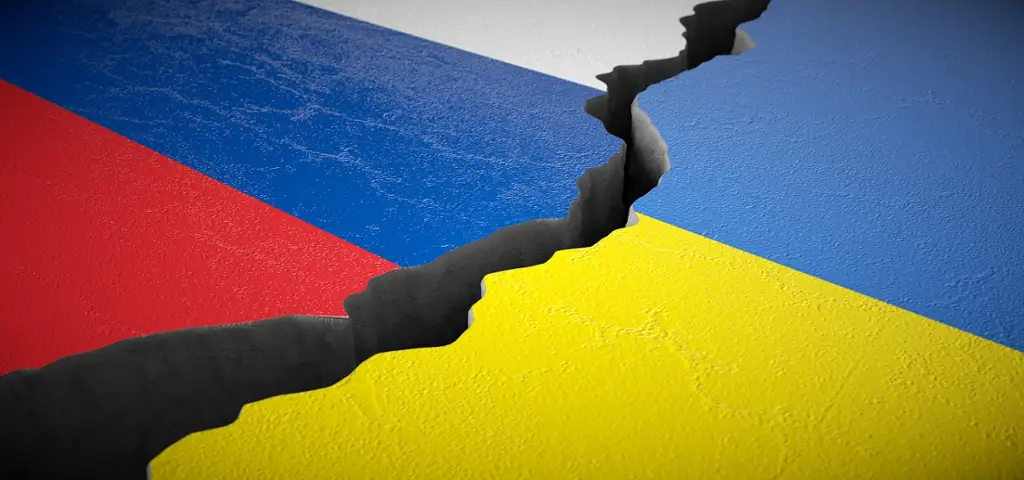Russian Worker Sentenced for Funding Ukraine’s Military Using Cryptocurrency
17.01.2025 19:00 1 min. read Alexander Zdravkov
A Russian diamond mining employee has been sentenced to seven years in a maximum-security prison for allegedly providing financial support to Ukraine's Armed Forces through cryptocurrency transactions.
Local reports from the Mirninsky district of Yakutia claim the individual transferred funds to aid Ukrainian military operations, including intelligence and subversive activities against Russia.
According to the report, the man was instructed to send funds to a specific digital wallet after joining a group on a social media platform.
Russia’s Federal Security Service (FSB) confirmed that he was charged under Article 275 of the Russian Criminal Code, which pertains to treason through financial assistance to foreign entities or organizations acting against the nation’s security.
This incident underscores how cryptocurrencies are being utilized amidst the ongoing conflict between Russia and Ukraine. While the Ukrainian government has openly embraced digital currencies, accepting crypto donations to support its war efforts, Russian entities have also turned to cryptocurrencies like Bitcoin to navigate Western sanctions and sustain foreign trade operations.
The role of cryptocurrency in this geopolitical landscape highlights its dual-edged nature, serving both as a tool for economic resilience and a means to bypass traditional financial restrictions in times of war.
-
1
U.S. Court Ends Tornado Cash Legal Dispute, Marking Win for Coin Center
08.07.2025 10:00 2 min. read -
2
SEC Charges Georgia-based First Liberty and Owner in $140 Million Ponzi Scheme
12.07.2025 17:00 2 min. read -
3
Ex-NCA Officer Jailed for Stealing 50 BTC From Dark Web Criminal
17.07.2025 20:00 3 min. read -
4
CoinDCX Suffers $44M Breach, Customer Funds Remain Secure
20.07.2025 10:00 1 min. read -
5
Crypto Users Targeted as Cointelegraph and CoinMarketCap Fall to Front-End Hacks
23.06.2025 14:00 2 min. read
CoinDCX Suffers $44M Breach, Customer Funds Remain Secure
Indian crypto exchange CoinDCX has confirmed a $44 million security breach involving one of its internal liquidity accounts.
UK to Sell Almost $7B in Seized Bitcoin as Treasury Eyes Crypto Boost
The United Kingdom’s Home Office is preparing to liquidate a massive cache of seized cryptocurrency—at least $7 billion worth of Bitcoin—according to a new report by The Telegraph.
Ex-NCA Officer Jailed for Stealing 50 BTC From Dark Web Criminal
A former National Crime Agency (NCA) officer has been sentenced to five years and six months in prison after stealing 50 BTC—now worth over £4.4 million—from a criminal investigation he was helping to lead.
SEC Charges Georgia-based First Liberty and Owner in $140 Million Ponzi Scheme
The U.S. Securities and Exchange Commission (SEC) has filed emergency enforcement actions against First Liberty Building & Loan, LLC and its founder, Edwin Brant Frost IV, alleging they operated a $140 million Ponzi scheme that spanned more than a decade and defrauded around 300 investors.
-
1
U.S. Court Ends Tornado Cash Legal Dispute, Marking Win for Coin Center
08.07.2025 10:00 2 min. read -
2
SEC Charges Georgia-based First Liberty and Owner in $140 Million Ponzi Scheme
12.07.2025 17:00 2 min. read -
3
Ex-NCA Officer Jailed for Stealing 50 BTC From Dark Web Criminal
17.07.2025 20:00 3 min. read -
4
CoinDCX Suffers $44M Breach, Customer Funds Remain Secure
20.07.2025 10:00 1 min. read -
5
Crypto Users Targeted as Cointelegraph and CoinMarketCap Fall to Front-End Hacks
23.06.2025 14:00 2 min. read


